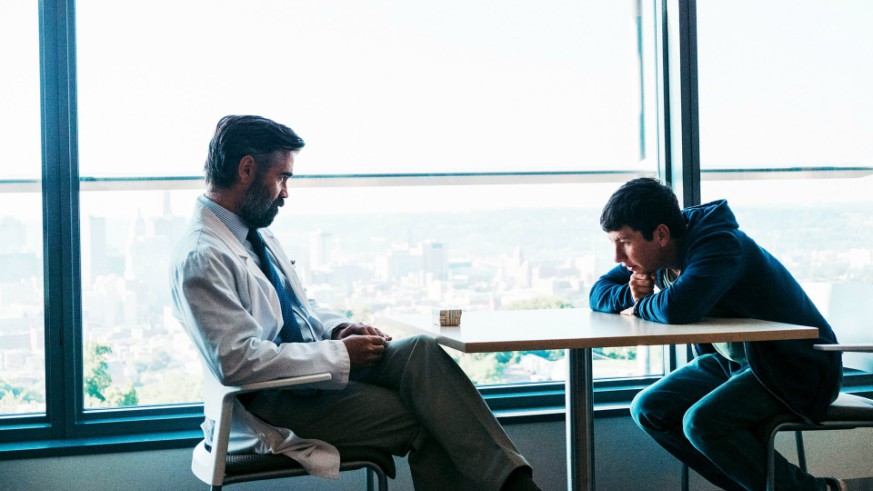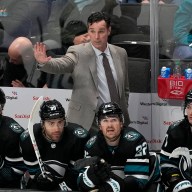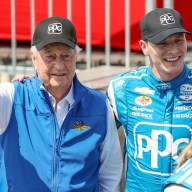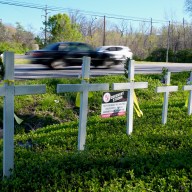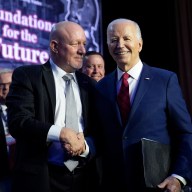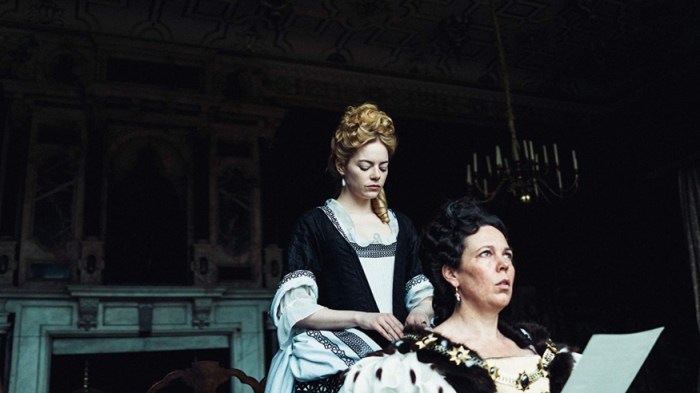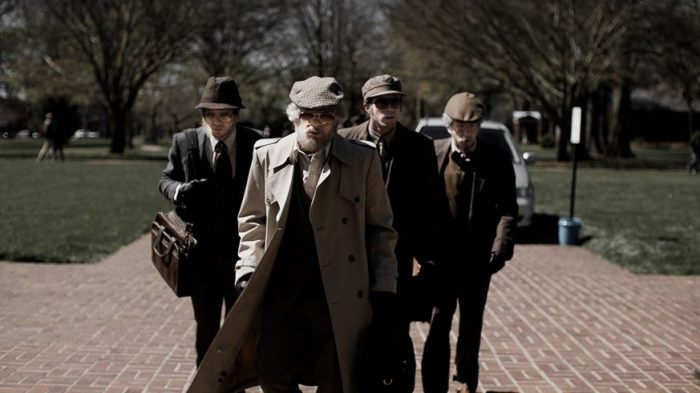It’s clear from the outset that director Yorgos Lanthimos and actor Barry Keoghan aren’t just not interested in over analyzing “The Killing Of A Sacred Deer,” but that they wouldn’t even know how to do so anyway.
“It was f**ked up, man,” responds Keoghan when asked for his first reaction to “The Killing Of A Sacred Deer’s” script. “The dialogue is beautiful, and it is gorgeous to say. After watching Yorgos’ previous films you read it in that way. There are so many layers to it. But I didn’t ask too many questions because I knew I wouldn’t get an answer. You just let the dialogue take care of it.”
Keoghan is selling himself short. Because while it is undeniable that Yorgos Lanthimos and Efthymis Filippou’s script is potently written to slowly unsettle and haunt, Keoghan’s performance as Martin, the teenager that is seemingly making Colin Farrell’s family suffer, is immediately creepy, and only becomes even more unpleasant and harrowing as the film continues on.
It is easily one of the stand-out performances of the year, with Keoghan eclipsing his more renowned co-stars Colin Farrell, Nicole Kidman, Alicia Silverstone, and Bill Camp.
Lanthimos admitted that it took a long time to find Keoghan, as they saw tapes of hundreds of kids from across the world before ultimately deciding on the 25-year-old Irishman. What drew Lanthimos to Keoghan is that he knew he had the “presence of someone” that could “transform the part written in a more interesting and complex way” than initially imagined.
The audition process is key for Lanthimos, though, because after six films he is now aware that not all actors respond to his methods. “[I] see how they react to the way that I work. I guess it is not the common way of working with actors. It is not very intellectualized, it is not analytical, it is just physical and doing things and trying things out. And that seems to be weird for some people.”
Keoghan had to adapt his usual preparation process for “Killing Of A Sacred Deer” and working with Lanthimos, too.
“Usually when I do a movie I prepare a whole backstory, like a lot of actors do, and you come in with all these perceived feelings. But when you come into this, this is Yorgos’ movie, and you don’t need all that backstory. What’s in the script is what you have. And there’s enough there to work off and everything is internalized and you don’t need to stress or overplay your feelings or emotions because you know it is not that type of movie. I didn’t do that much research for Martin. Martin; the name was enough for me.”
You can read further tidbits from my interview with Yorgos Lanthimos and Barry Keoghan for “The Killing Of A Sacred Deer,” including how the pair collaborated during filming, below.
On making “The Killing Of A Sacred Deer” feel like a documentary …
BK: “I didn’t watch a movie to get a feel. I don’t really do that. I know that some people do mood boards, but Yorgos doesn’t really do that. I watched a lot of kids on documentaries. Just the way they’re not aware of the camera. They’re so present. I just thought that Martin needed to be very present. Off YouTube, there was [a documentary] in a classroom where they were just putting blocks on top of each other, and the camera was getting so close to them but they were just so present. Obviously I was aware of the camera, but I wasn’t really aware because I would ask [Yorgos where it was].”
YL: “It is kind of impossible, especially with actors, to recreate that kind of [documentary] feel because the camera always feels present. But what I try to do is to avoid trying to think about the scene too much, or the characters too much, or why we are doing certain things, the general motive, or the background. Things that are usually the opposite or common in filmmaking. We were trying to recreate that [documentary] feeling by having actors present in the moment, instead of having a lot of things in their mind about how they are saying something, or how they are moving, or how they are doing something, trying to avoid that and create an uncertainty about how all these things are. That was in order to create a similar kind of feel in a different way, because it is a film, and they are actors, and it is stylized. I think it is a different way to create some kind of truth.”
On the similarities between Yorgos Lanthimos and Christopher Nolan …
BK: “I came straight from ‘Dunkirk’ to this. Obviously there are big changes in the set and the vibe, but they are very similar, Chris and Yorgos, in the sense of they are very small and they don’t say much, and they are very precise with their direction. They are just geniuses. They create unique worlds with ‘Inception’ and ‘The Lobster,’ and they are very much on set. It is a dream going from that set to that, just working with people of that caliber.”
On delivering lines as a villain …
BK: “I thought if I can just say these words and get them out really quick or just say a line like, ‘I’m gonna kill ya,’ without intention it is a bigger impact. That’s lesson one of the villain book, ya know, just deliver your line without any, especially doing it in this rhythm I think helps because everything is said with a bit of containing and withholding and it makes a bigger impact on everything … I never saw him as a villain until after the first screening, and then everyone was like, ‘Yeah, he’s bad.’ I was like, ‘Was he?’ It was not until I’d seen the movie that I realized he was a little menace. But they’re all bad. There’s a bit of badness in all of them I think.”
On whether he is genre-defying …
YL: “I think it is just a natural tendency to create those kind of things. I find it interesting to make those kind of things without relaunching a genre. I do like to flirt with it. When I have a script I do understand that it could rub shoulders with horror. I try to create that dialogue. In the same way we reference a Greek tragedy with the film. I noticed similarities so tried to make the connection. I recognize it once we have written, but I try not to start by trying to write something that will belong in the genre.”
On shooting in the USA for the first time …
YL: “I enjoyed it. I kind of do and I don’t because it is such a stressful time, especially for the filmmaker. Comparatively compared to my other experiences I did enjoy it. Especially when you are in a smaller city [Cincinatti], when compared to New York or LA. You get a sense of people wanting to be much more part of films. They invite you into their homes, and they’re welcoming, and it is easier to get around. I think there is a tradition with independent cinema in the US that exists less than in the UK at the moment. So you can find people that are interested in making different types of films, and they want to be part of it, and they can be more flexible in how they make them. My problem from coming from Greece and getting into the industry structure of filmmaking, except for solving certain problems I had, like having the necessary means to make films, it did create a certain kind of inflexibility in other things that kind of made me feel constrained. So in the US I was able to reintroduce that kind of flexibility back into filmmaking. It is no way as flexible as making films in Greece, but you pay a different price there. You don’t make any money.”
On being an auteur …
YL: “You don’t think about these things. I just try to do whatever it is that I do. I try to be true to that, try to do different things every time, but at the same time maintaining whatever it is through the years that are important to me. So it is all practical really. How do I want to make things? What things work for me? What don’t? How do you want to do things differently next time? You just don’t want to be bored, and you want to be different. Just take it one thing at a time.
“The Killing Of A Sacred Deer” is now in cinemas.

